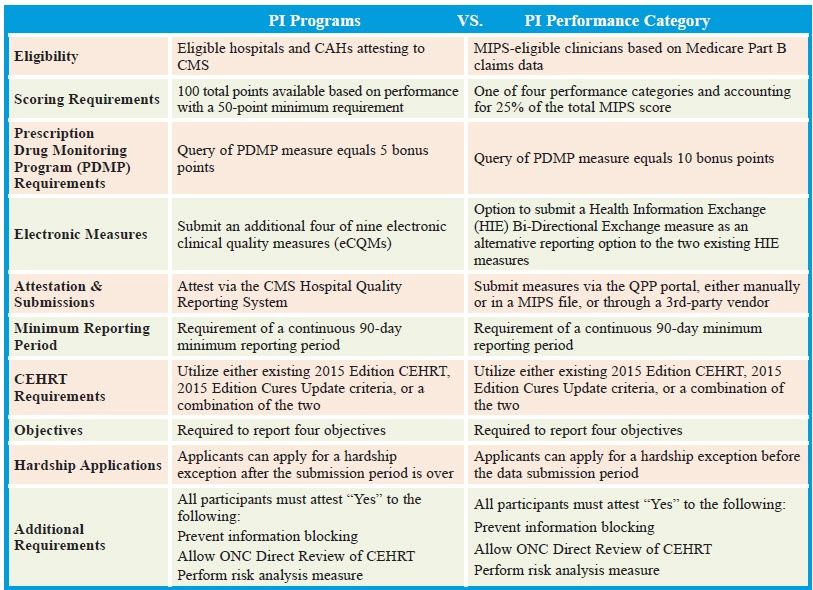Health Information Compliance Alert
Avoid PI Mix Ups With This Handy Comparison Chart
Understand how they differ and impact quality incentives.
If you’re confused about the difference between Medicare’s Promoting Interoperability (PI) Programs and the Merit-Based Incentive Payment System (MIPS) PI performance category, you’re not alone. Using the same name in two completely different programs has caused a lot of confusion for providers, but there are a few clues that will help you figure out which PI-related policies impact your organization.

History: In 2011, the Medicare and Medicaid EHR Incentive Programs — informally referred to as Meaningful Use (MU) — were established by the Centers for Medicare & Medicaid Services (CMS) to boost clinicians, eligible hospitals, and critical access hospitals (CAHs) use of certified EHR technology (CEHRT). However, in 2015, MACRA was signed into law, and it created a separate program — the Quality Payment Program (QPP) — specifically for Medicare eligible clinicians.
“These eligible clinicians who had previously participated in the EHR Incentive Programs” began participating in MIPS, “which is one of two ways to participate in [the] QPP,” notes CMS guidance. Originally, the MIPS health IT category was named Advancing Care Information (ACI). But in 2018, the agency renamed ACI, Promoting Interoperability while simultaneously rebranding MU as PI Programs.
Pocket this breakdown on the various nuances and differences between the Medicare PI Programs and MIPS PI performance category for calendar year (CY) 2021 garnered from CMS guidance:

Resources: Find more detailed information on the Medicare PI Programs at www.cms.gov/Regulations-and-Guidance/Legislation/EHRIncentivePrograms and review PI performance category data and guidance at https://qpp.cms.gov/mips/promoting-interoperability.
Health Information Compliance Alert
- Policy:
Feds Propose Big Changes for Promoting Interoperability Programs
Warning: 2022 IPPS rule suggests ramping up eCQM reporting. If you thought COVID-inspired policymaking would [...] - Note These Other IT-Related Proposals
In addition to Promoting Interoperability (PI) Program changes, the Centers for Medicare & Medicaid also [...] - Promoting Interoperability:
Avoid PI Mix Ups With This Handy Comparison Chart
Understand how they differ and impact quality incentives. If you’re confused about the difference between [...] - Patient Engagement:
Boost Patient Success With These Scheduling Insights
Tip: Keep HIPAA on the front burner as you set up protocols. Not only can [...] - Toolkit:
Understand These HIPAA Violation Basics
Warning: Some HIPAA violations carry criminal penalties, too. If your organization is digging out from [...] - Enforcement News:
Don’t Expect Any Let Up on Right of Access Enforcement This Summer
It’s clear the HHS Office for Civil Rights (OCR) wasn’t kidding when the agency made [...] - Enforcement News:
Lab Gets Hit With HIPAA Violation After Compliance Review
If your HIPAA compliance isn’t in line and the HHS Office for Civil Rights (OCR) [...]

